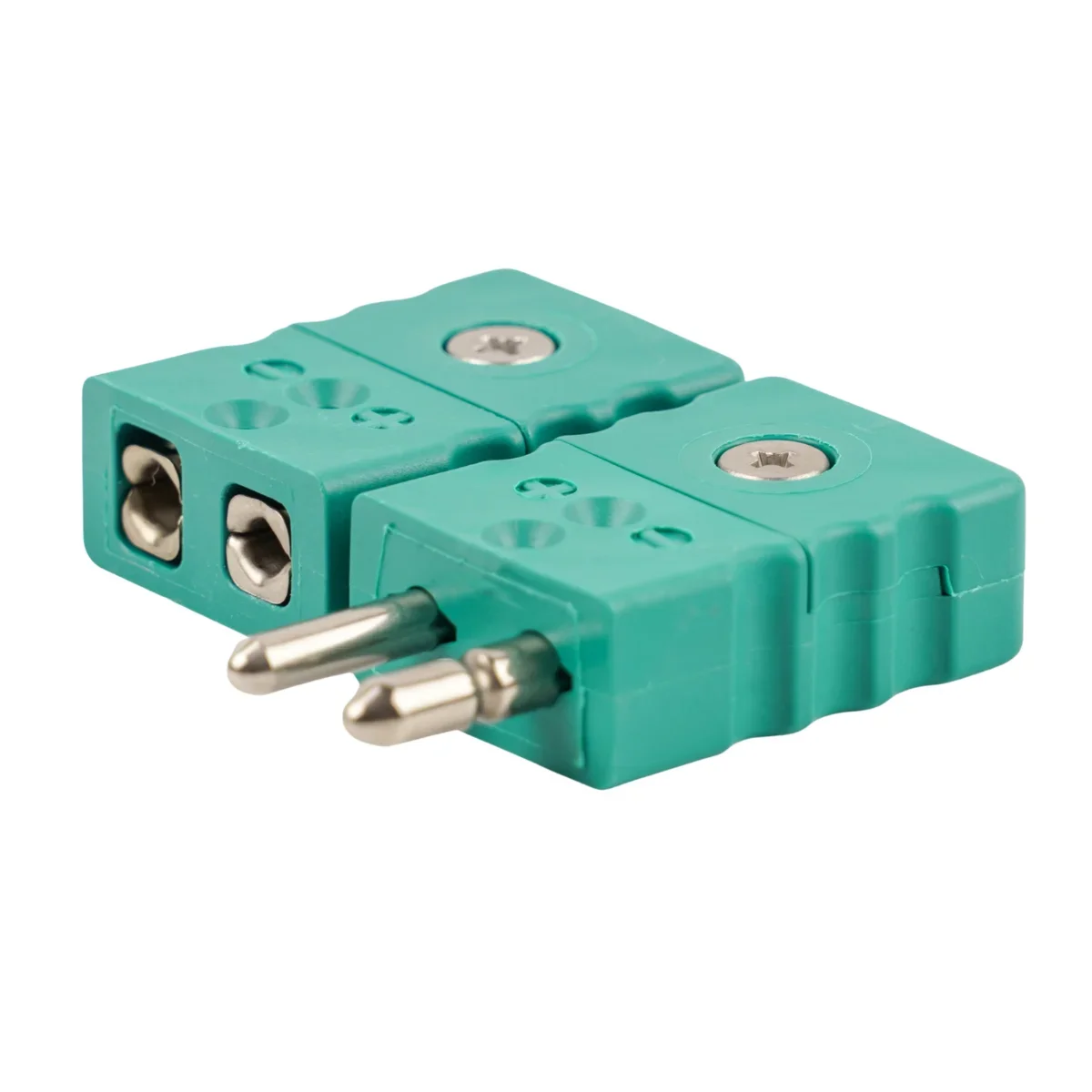What Are Temperature Sensor Connectors (Plugs & Sockets)?
TL;DR — Quick Summary
Temperature sensor connectors (plugs and sockets) are cold-end terminations used to link sensors — such as thermocouples and resistance thermometers — to instrumentation. They come in standard (round pins) and miniature (flat pins) versions, are polarised to prevent incorrect wiring, and are made from materials suited to various temperature ranges. Thermocouple connectors use alloys matching their sensor type to maintain measurement accuracy.
What Are Temperature Sensor Connectors?
Temperature sensor connectors are essential components that allow your sensor to connect securely to your measuring or control equipment. They form part of the cold-end (or reference end) of the measurement circuit.
- Plugs attach to the sensor lead.
- Sockets are fitted to, or integrated with, the instrumentation.
Their primary purpose is to ensure a reliable and accurate electrical connection between the sensor and the measurement device.
Types of Temperature Sensor Connectors
- Larger in size
- Round pins
- Widely used for industrial applications
- Smaller and more compact
- Flat pins
- Common in space-constrained installations
Both types are polarised, meaning they can only be connected in the correct orientation, preventing cross-connection and wiring errors.
- Plugs attach to the sensor lead.
- Sockets are fitted to, or integrated with, the instrumentation.
Their primary purpose is to ensure a reliable and accurate electrical connection between the sensor and the measurement device.
Thermocouple vs Resistance Thermometer Connectors
Thermocouple Connectors
Resistance Thermometer (RTD) Connectors
- Often use three pins instead of two, to suit 3-wire RTD configurations
- Designed for high-accuracy resistance measurement
Materials Used in Connectors
Temperature sensor connectors are available in a variety of materials to match application conditions:
- Standard plastics — for general use
- High-temperature plastics — for moderate heat environments
- Ceramics — for very high temperature or demanding industrial applications
Frequently Asked Questions (FAQ)
Why are connectors polarised?
To ensure they can only be connected the correct way, preventing cross-connection and potential damage.
Can I use a Type K thermocouple connector with a Type J sensor?
No — the alloys must match the thermocouple type to avoid introducing measurement errors.
What’s the difference between standard and miniature connectors?
Standard connectors are larger with round pins; miniature connectors are smaller with flat pins.
Do RTDs need special connectors?
Yes — RTD connectors often have three pins to support 3-wire configurations, which improve measurement accuracy.
What materials should I choose for high-temperature applications?
High-temperature plastics or ceramics are best for prolonged exposure to elevated temperatures.

